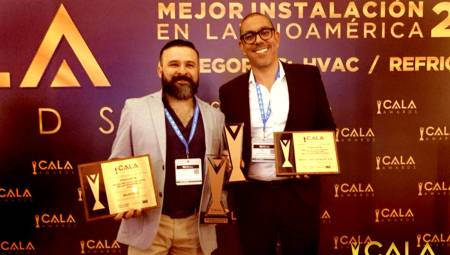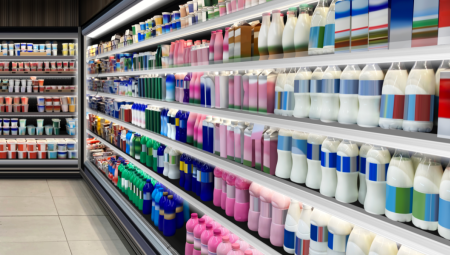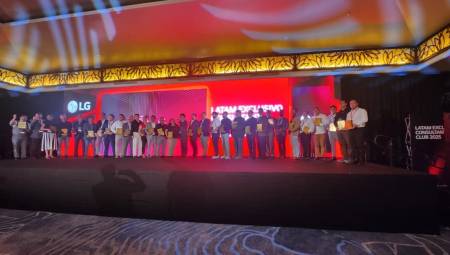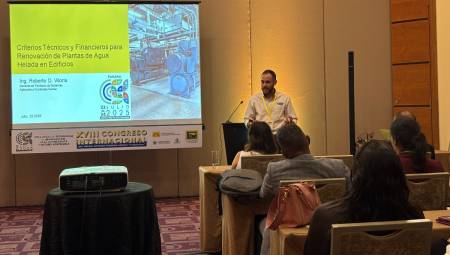Every day we encounter new challenges when we try to design an air conditioning system. These challenges are presented to us by several factors and among them the most important are: satisfying the need for the comfort of the occupants and at the same time, minimizing energy consumption.
By Alfredo Sotolongo*
In previous articles we have addressed different challenges presented by the designs in terms of energy saving, but in my opinion, one of the most delicate applications is the recovery of heat by exchanging energy between the polluted extraction air and the ventilation outside air. This is further manifested in our tropical countries where the outside air is humid and hot, accounting for up to 5 tons per 1,000 CFM that are introduced into the air conditioning system. The purpose is to process the ventilation outside air before introducing it to the air conditioning system so that when it is mixed with the return air it already has a condition where it does not penalize the capacity of the unit, avoiding increasing the thermal load.
Besides professional responsibility and the engineer's conscience, what governs the decision to specifically use air-to-air energy exchangers?
1. The existing standards published by ASHRAE and which are as follows:
to. INDOOR Air Quality ASHRAE 62 - ventilation to achieve acceptable indoor air quality.
b. Thermal comfort ASHRAE 55 – thermal conditions of the environment conditioned for the occupation of human beings.
c. Energy efficiency ASHRAE 90.1 – energy consumption in structures excluding low-rise residential buildings.
2. Other influencing factors are the following:
to. To achieve LEED™ certification
b. Contaminated building syndrome
c. To comply with the ARI 1060 standard that classifies air-to-air energy exchange equipment.
There are several air-to-air energy transfer equipment, some transferring sensitive heat only. But in this case, I prefer to refer to those that transfer both sensitive and latent heat, since with these the optimal recovery of energy is achieved. We know about enthalpy wheels and fixed plates, but before deciding which one to select we must take into consideration the following:
1.The material used to achieve energy exchange plays a predominant role in the process, as the transfer method makes the equipment more or less efficient. In addition, this material prevents contamination from the exhaust air to the ventilation air, which is of utmost importance especially in hospitals and laboratories.
2.In terms of maintenance, the ideal is that the equipment has the least amount of movable parts.
3.That their capacity is certified by a recognized institution.
This equipment is manufactured for different types of arrangements, either to operate independently using external fans, with integrated fans or inside air handling units. They offer their best service when the unit handles 100% outside air.
In the mid-70s absorbent wheels were commercially developed for industrial applications and later, in India and Sweden, enthalpy wheels, which over the years were improving energy transfer materials. However, the fact that they are porous has not allowed them to prevent the transfer of contaminants from the exhaust air to the ventilation air.
In the United States, in the mid-90s the dais Analytic company, using nano technology, developed a polymer originally for fuel cell applications. The polymer was composed of molecules of Sulfite salts (SO3) and upon confirming that it was a good heat transmitter and that its constitution allowed only water vapor molecules to pass through, from the high pressure vapor side to the low pressure side, they considered it to be the ideal material for the transfer of energy from air to air. In addition, they found that it was more efficient than the material of the enthalpy wheels and that since it was not porous, it did not allow any other type of substance to pass from the exhaust air to the supply air, including contaminants such as bacteria, etc.
The equipment for energy transfer developed by Dais Analytic is marketed under the name of ConsERV and has been a great step forward since it has no movable parts and the only maintenance that is required is to change the filters that protect both the extraction side and the ventilation side.
The engineer who designs an air conditioning system, especially where outdoor air conditions could greatly increase the thermal load, seriously thinks about energy recovery not only to meet existing standards but also his professional responsibility to offer his customer the best that is available in the industry at the time of design.
*About the author
Engineer Alfredo Sotolongo, president of Protec, Inc., is certified as a professional engineer in Puerto Rico and the State of Florida; has more than 40 years of experience in the application and sale of systems and equipment for energy conservation. He is a member of ASME (American Society of Mechanical Engineers), AEE (Association of Energy Engineers), with whom he is certified as an Engineer in Energy Management; he is also a member of ASHRAE and was president of the Miami chapter of that association. He has also presented numerous talks on the subject of energy conservation.













